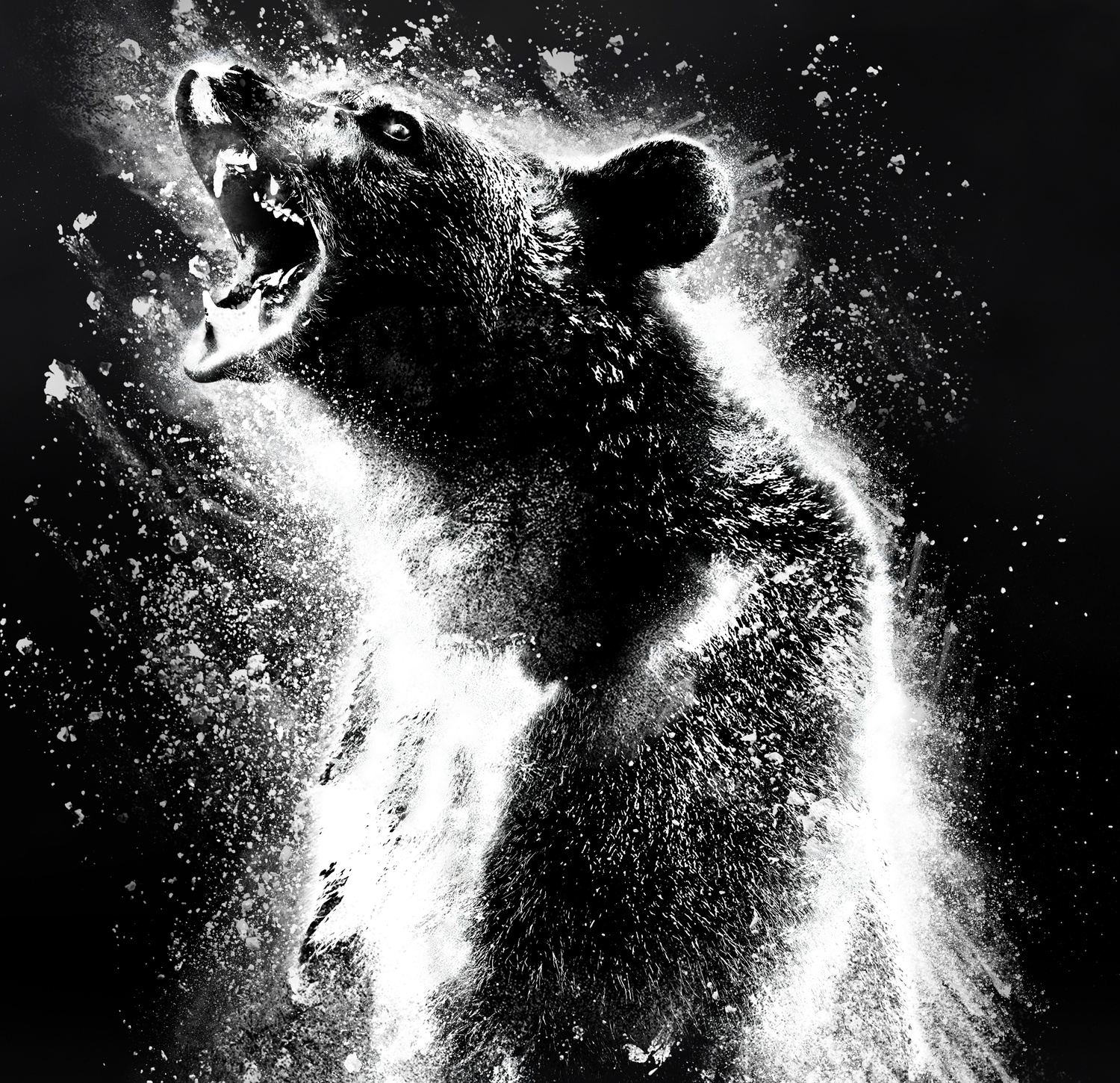
News
Progressive Labor Party Organizes Solidarity March With Harvard Yard Encampment

News
Encampment Protesters Briefly Raise 3 Palestinian Flags Over Harvard Yard

News
Mayor Wu Cancels Harvard Event After Affinity Groups Withdraw Over Emerson Encampment Police Response

News
Harvard Yard To Remain Indefinitely Closed Amid Encampment

News
HUPD Chief Says Harvard Yard Encampment is Peaceful, Defends Students’ Right to Protest
‘Cocaine Bear’ Review: An Up to Snuff Blockbuster Revival
Dir. Elizabeth Banks — 3.5 Stars

“Jaws” took the world by storm in June of 1975. Dubbed the first ever summer blockbuster, it ushered in an era of big budget, attention-grabbing cinema. The fruits of this "movie brat" movement were sometimes groundbreaking (e.g., “Star Wars” and “Indiana Jones”), and other times yielded stale ideas and poor imitations (e.g., “Grizzly” and “Alligator”).
In 2023, the Hollywood blockbuster formula has instead shifted its focus toward well-known directors, well-known actors, and well-known franchises. If a movie has one, two, or all of the following, it is likely to be greenlit by a major studio. Elizabeth Banks’s “Cocaine Bear” defies this formula. It harkens back to the days of the “movie brats,” wherein ambitious directors like Steven Spielberg and George Lucas reigned over Hollywood.
While “Cocaine Bear” unsurprisingly does not carry the same emotional weight as a Spielberg narrative or the same visual flair as a Lucas film, it, like its predecessors, runs with what could be a one-note concept and transforms it into something wholly itself. In the case of “Cocaine Bear,” this means nonstop action propelled by zany characters and their outrageous encounters.
A rollicking adventure that never shies away from the absurdity of its source material, “Cocaine Bear” follows the story of a deranged bear high off its mind on millions of dollars’ worth of cocaine. And while that might not seem like enough to ground an hour and a half feature film, it does. Indeed, as soon as the trailers end and the title cards disappear, “Cocaine Bear” finds its footing.
The opening scene depicts Andrew C. Thornton II, a coked-out drug smuggler, aboard a crashing airplane. Strapped with a heavy load of prepackaged cocaine, he faints immediately after hitting his head on the plane’s hatch. Thornton and the cocaine, barreling to the ground, are left to fate, which comes in the form of a four hundred pound, man-eating carnivore.
This type of absurdist, irreverent comedy favorably carries throughout the movie. Each character is a caricature of some sort, ranging from compassionate tough guys to a lustful old lady and her object of desire. Even the late Ray Liotta, famous for his stint as mobster Henry Hill in “Goodfellas,” plays an exaggerated drug kingpin held accountable for the lost cocaine. Through these ridiculous characters, the movie finds a few laughs, especially through little Henry’s vulgarities, detective Bob’s foofoo puppy, and Ranger Liz’s thirst for Peter.
Where “Cocaine Bear” most shines, though, beyond its hyperbolized characterizations and over-the-top dialogue, is its comedy-horror. Unlike “Jaws,” which opted for tension and drama over grand scale shark encounters, “Cocaine Bear” makes frequent and unserious use of its titular character. Any sequence with cocaine, the bear, or both are instantly gripping and hilarious.
But most of all, “Cocaine Bear” is extremely violent, its humor deriving from a slapstick horror reminiscent of cult classics like “Evil Dead” and the recently popular “Terrifier” franchise. In a variety of always escalating, always creative sequences, the characters of “Cocaine Bear” undergo absurd injury after injury. These visual gags are made all the more outrageous by the painstaking attention to detail paid to the movie’s special effects.
One of the biggest and most remarkable jokes of “Cocaine Bear” may be its hyper-realistic rendering thereof. At no time in the movie does one feel taken away from the story as a result of lackluster digital effects. That which should be totally fictional, a “cocaine bear,” appears on camera as convincingly as any wild bear would, which only contributes to the insanity of the movie’s premise and effective execution.
“Cocaine Bear,” though, climaxes too soon. Its best scene, involving Ranger Liz and the local ambulance, occurs midway through the movie. Chock-full of shocking and hilarious moments, this scene and its buildup are worth the price of admission alone.
Except, the rising action and climax pale when compared to the elaborate ambulance gore fest. In any other movie, this might not be as considerable an issue. But in “Cocaine Bear,” in which complex characters are shelved for static archetypes and the main attraction is the “cocaine bear” itself, the action should escalate from start to finish.
The ambulance scene undercuts this escalation. The movie’s central plot device peaks too soon and the slapstick horror subsequently falters.
While it has its shortcomings, “Cocaine Bear” ultimately delivers on its uncomplicated promise in a way that is compelling, laugh-inducing, and original. If not the second coming of “Jaws,” “Cocaine Bear” is still an important (albeit absurdist) step for the film industry, a sign of more ridiculous, fun-filled blockbusters to come.
And if rumors are to be believed, a “Cocaine Shark” movie could be just on the horizon.
Want to keep up with breaking news? Subscribe to our email newsletter.
